An Unreal Dream, An Uncommon Man
An extraordinarily powerful documentary premiered at the SXSW Film Festival in Austin this past week, An Unreal Dream: The Michael Morton Story. In an era when civilization has allowed us to avoid most of our primal terrors, this film tells the true story of a civilized terror: An innocent man wrongly convicted for the murder of his wife.

Michael Morton in the grip of the nightmare, wrongly convicted for the murder of his young wife. (Photo: 1986, Williamson County Sun.)
The story itself incorporates all the elements of an American tragedy. A young husband, Michael Morton, the day after his birthday, returns home to his young wife and three-year old son, only to find his house surrounded by police cars. Unemotional and sinister police inform him that his wife has been brutally beaten to death. They refuse his request to see her body and that night question him in a menacing way. In an instant his nightmare begins. The suffocating reality of an amoral system unfolds with the logic of a modernist fable.
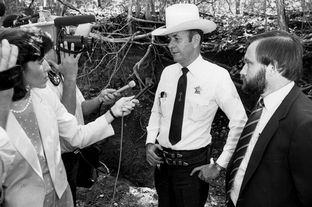
Williamson County District Attorney Ken Anderson, right, and Sheriff Jim Boutwell speak with reporters. Both knew of exculpatory evidence. Both hid it. (Photo: 1986, Williamson County Sun.)
The nightmare, it turns out, was no accidental miscarriage of justice. Rather, behind it were the decisions of a Texas sheriff and a ruthlessly ambitious District Attorney, Ken Anderson of Williamson County, who withheld exculpatory evidence in order to get the cheap conviction that helped make his reputation and allowed Anderson to take his place on the Texas bench, where he now administers justice. His successor as District Attorney continued the fight for years, opposing efforts to test physical evidence that might expose the injustice perpetrated by his mentor. We who believe in justice force ourselves to hope for a special corner of hell for those who corrupt justice. That is not this story, however.
This story is told in a sparse, unobtrusive way by director Al Reinart, one-time Texas journalist and two-time Academy Award nominee (for director of the documentary For All Mankind and as screenwriter of Apollo 13), who never lingers over any element of the tragedy, whether it was the love shared by the young couple, the travesty of the trial, the years of incarceration of the innocent man or the efforts of a new legal team to do the work that the Texas police and District Attorney failed to do, because they had a much easier way to close the case. The title of the film comes from an observation by Justice Learned Hand: “Our procedure has been always haunted by the ghost of the innocent man convicted. It is an unreal dream.” The unreality and dream-like logic of this nightmare unfolds simply with the statements of the witnesses who talk directly to the camera. Everyone speaks as though haunted by their participation (except Anderson and the other perpetrators who are only seen in archival footage, unrepentant), each trying to explain why they acted as they did. It is Morton’s fellow inmates, however, who provide the lucid and nuanced commentary. It is they who spotted his innocence, his grace and his strength and who provide the most trenchant analysis of Morton’s story.
But what makes the film emotionally stunning is Michael Morton himself. He tells most of the story, sitting in a chair in the Georgetown, Texas, courtroom where he was wrongly convicted. He talks to us quietly, objectively, without bitterness and, at times, even with humor, the kind of humor that only a man who has suffered to the core of his being can express. There are no theatrics, no obvious accusations, no dramatic courtroom scenes, only a quiet telling of the story that is both heart-breaking and in surprising ways up-lifting. The courtroom is bathed in a brown, diffuse light and is unnaturally quiet, like any other crime scene years after the criminals plied their trade.
Morton tells how he met his wife Christine in college. He says he was attracted on observing her see through a line his roommate tried on her. Morton quietly listed her virtues, the things he remembers a quarter of a century after her death, things that still make his face light up and bring a barely noticeable smile to his face. He tells how the birth of his son, Eric, changed his life, in the way any young parent explains it, although he is now the age of a grandfather. (He is now in fact a grandfather.) He explains in a simple and tender manner the heart problem his son was born with, the anguish of three years of fearful concern, the surgery and the joy of discovering that his son would live like any normal child. He tells of the happiness of his birthday in August 1986, when he, his wife and son dined out and how “great” he felt walking home, each parent holding one of Eric’s hands. And he directly says how he went to bed that night on his birthday with Christine not in the mood for lovemaking and how he left a note for her on the subject that would help undo him.
The story of the trial is told by his lawyer, who though devoted over many years, did not seem the match for the ruthless Anderson, and by two jurors. The woman juror’s defense of the verdict was perhaps most horrifying. She explained how DA Anderson was so handsome and so sure of himself, how Morton did not show the emotion she expected and, most tellingly, how there was no evidence about anyone else. With no showing that she ever reflected on her role or ever had a real understanding of how American criminal justice is supposed to work, she tells the camera that Morton did not put up enough evidence to show that he was innocent. This earnest juror probably dutifully voted to make Anderson the District Attorney, cheered him on when he won his reward for years of dirtying his hands in the retail dispensing of punishment. At the trial she certainly did his bidding.
The key feature of the trial was the testimony of a doctor, who concluded from stomach digestion that Christine had died at 1:00 a.m., hours before Morton told the police he had gone to work. (John Raley, the Houston civil attorney who was instrumental in Morton’s recent release, explained in a session after the film that the doctor himself admitted that his conclusion was not based on generally accepted scientific principles. In other words, the opinion evidence was incompetent and should not have been admitted.) Defense witnesses showed how stomach digestion analysis was “junk science” in terms of fixing the time of death. But the jury duly convicted nonetheless. The jury foreman told the camera that in most cases the husband is responsible and that belief was in the back of their minds. The testimony of these two Williamson County citizens helps explain why Texas has so many wrongful convictions. But that is not the point of the film.
The heart of the film is the resurrection of Michael Morton. He explains how for years he fantasized the murder of those he believed responsible for his plight: the DA, the sheriff, the foreman of the jury and others. He said that his wallowing in his revenge wish was like drinking poison so that someone else might die. He quietly described the horrors of prison life, details of which were supplied by fellow inmates. They explained how visitations were the one thing that brought hope, a breath of air, a show that there was order and freedom out there. The court had ordered that Morton’s son be brought to visit him every six months. He was raised by Morton’s sister-in-law. Morton explained how in the course of these visits he could see how his son was being taken from him. An inmate described how the sister-in-law stared at Morton throughout the visits with hatred. During one visitation, Morton was startled when he heard Eric call his sister-in-law Mom. But the estrangement only was beginning. By the time Eric was a teenager he decided that he knew nothing of his father and did not want to participate any longer in this man’s life. He wrote to Morton asking to be relieved of the visits. Morton replied that he would grant the wish if Eric would come to put his request to his face. Come the visit, his son could not look at him, but insisted he wished that it would be the last. Morton granted his request and left the visit after two minutes.
As Morton tells the story he is gripped by visible anguish, something that is almost completely absent from the rest of his narration. Morton tells the camera that of all the disappointments and tragedies, this one nearly did him in. An inmate explains how visitations can crush a man. And this one put a period to a part of Morton’s life.
In his travails in the Texas penal system Morton eventually asks God for a sign that He exists. And he got “Nothing,” he says. But in a couple of weeks, he has a profound and mystical experience that reveals to him the Three Truths that would sustains him through the remainder of his ordeal: That God exists. That He is wise. And that He loves him.
Soon through efforts of his trial lawyer Barry Scheck’s New York Innocence Project becomes involved. They engage a Houston medical malpractice lawyer, John Raley, who becomes a dogged advocate for Morton, and even better, Morton calls him “my friend.” It would take years to battle the hostile Williamson County Attorney’s office (who played with underhanded tricks) and to interest an apathetic Texas court system, but through DNA evidence, the pro bono lawyers are able to show that a piece of physical evidence ties a known felon to the murder, and tragically, to a later murder committed in nearby Austin in similar style after Anderson had closed the case by charging and urging the conviction of an innocent man. Morton is eventually released, the felon faces trial which will begin tomorrow, March 18, 2013, and the state bar association and a commission of inquiry are deciding the fate of the Honorable Ken Anderson.
The ending is not so pat. It takes time and reconciliation for Eric (now legally Olson) to reconcile with his father. Eric had long believed that his father had killed his mother. But at their first meeting, arranged at John Raley’s home, Eric listens to his father talk of his love for his mother, and the healing begins. Director Reinert wisely waits to this point to show the homemade videos of the young couple’s life with their child. It is as though only now does their life begin. Even Eric says that as he was always told his mother was his guardian angel, he believed that his mother was present for the reunion, smiling.

From left to right: Director Al Reinert, Michael Morton and Attorney John Raley at media event after film premier in Austin, Texas.
The film concludes with Morton again explaining how he discovered the Three Truths about God and how he believes that there can be nothing wrong as long as he lives with that knowledge. A clip of Morton testifying at the inquiry on Anderson shows him telling the commissioners that they have to do what must be done, but urges them to treat Anderson “gently.”
I go to this excessive length to describe this film, first to suggest that it be seen. But also for another reason. What struck me about the story of the imprisonment was how similar his description of his resurrection was to that told by Dostoevsky in The House of the Dead. Of course there are significant differences. Dostoevsky tells how he was not accepted by the peasant convicts, who could not overcome class barriers. The inmates interviewed in the film, however, universally testified to how they respected Morton and believed in his innocence (and after his conversion his unworldly unselfishness). But the outline of the years of brooding, the time it took to reconcile to his lot (this also has echoes in the epilogue to Crime and Punishment) and to the eventual salvation through suffering are strikingly similar. Morton (much like Dostoevsky explicitly does) explains how he discovered God through his suffering, and how that suffering is responsible for his present joy. The epiphany that both undergo (as does Raskonikov as well), accompanied as it was by a visual aura (one that Dostoevsky would experience from time to time for the rest of his life, accompanied with his epileptic seizures) seem not only real but palpable. The fervor that both use to describe salvation born through suffering is genuine and convincing.
The inmate who knew Morton the longest concludes that while he would not wish it on him, nevertheless, the sufferings of Morton made him, the inmate, a better person and Morton as well. This observation is delivered with the kind of quiet knowingness that those of us who have not suffered (whether innocent or not) cannot question. This is the same hard theology that Dostoevsky tells from The House of the Dead all the way through The Brothers Karamazov. It is hard not to conclude, at least only from considering it from the foreign perspective of Siberia 150 years ago, that the psychology of imprisonment, the forced labor, the lack of privacy (a thing emphasized especially by both Dostoevsky and Morton), the slow drain of one’s life must have both a debilitating and yet mystical effect on the inmate, much like the self-inflicted physical suffering and privations effected in Western Christian mystics (and perhaps Zen Buddhists). Is this all a matter of human psychology? Is there really anything sacred in a philosophic system that requires a man to be stripped of all personality, dignity, self-worth and freedom in order to attain enlightenment and salvation? Dostoevsky, at least, understands this objection and tries to meet it head on in The Brothers Karamazov, which in the end nearly meets the challenge. Morton is not a philosopher; his “proof” is in his almost beatific manner, his calm dignity and a willingness to forgive that an astonished audience could not fathom.
This, as I said, is a hard theology and one that is not immediately convincing. In the questioning period following the film, Morton himself was asked how he would feel about the real killer when he sees him this week in the trial for the death of his wife. Morton, in life no more given to dramatics or dissembling than in the film, answered that he knew that in the long run forgiveness was required, yet he said, point blank, “But I’m not there yet.”
Whatever you might think of this hard theology, it is worth seeing this man, Michael Morton. We have grown loud, and insincere, and opinionated. (These of course are the characteristics of the legal system that wrongfully imprisoned Morton.) We rarely (if ever) see a man with the dignity and grace of Michael Morton. A man who should be bitter, but who finds more joy in life than most of the rest of us do. Morton explains that in prison it’s possible to have a monastic retreat. He says that it is never easy, but in prison he had the time for intense self-analysis, time to review every word he ever spoke. That undoubtedly is why this rebuilt man says everything with such uncommon depth. Whatever your view on God, the Universe and Everything Else, you will marvel that Great Souls, Mahatmas, still exist. Even in unlikely places like Williamson County, Texas.
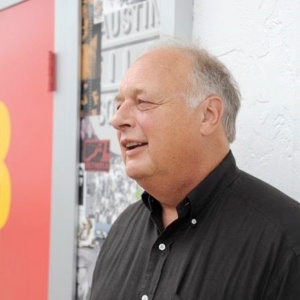
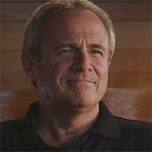
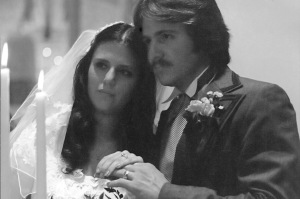
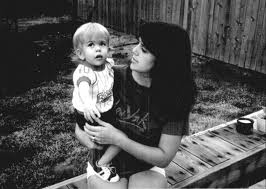
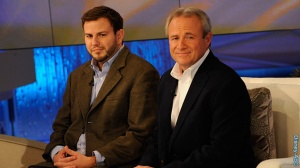
Look into the death of Tony Pina in 1987 and Boutwell and Andersons role in that sordid affair.
Did Eric Olsen take back his fathers name of Morton?